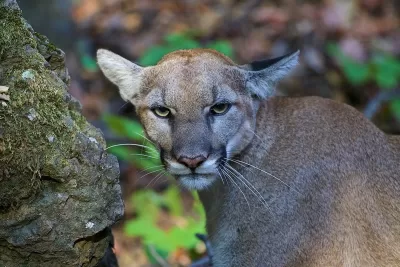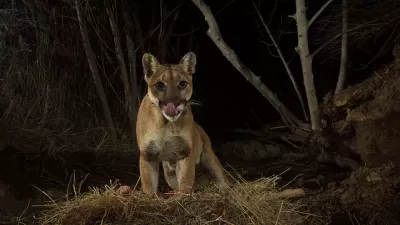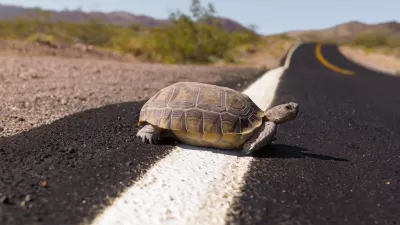A mountain lion was found dead on the 101 Freeway, less than half a mile from the steel and concrete endoskeleton of the Wallis Annenberg Wildlife Crossing.

On June 15, 2024, a mountain lion was struck and killed on the 101 Freeway in Agoura Hills, less than half a mile from the under-construction Wallis Annenberg Wildlife Crossing. This incident underscores the necessity of the wildlife bridge, set to be completed by early 2026, which aims to provide a safe passage for animals across the freeway, reducing wildlife fatalities and supporting genetic diversity for species in the Santa Monica Mountains. Local officials and wildlife advocates expressed both heartbreak over the recent death and relief that the wildlife crossing is becoming a reality, emphasizing its critical role in preventing further losses.
The California Highway Patrol reported the fatal accident early in the morning, with the deceased lion later identified as an uncollared adult male by the California Department of Fish and Wildlife. Genetic samples were collected to learn more about the lion's origins. This tragic event, along with previous similar incidents, highlights the ongoing dangers faced by wildlife in the area and reinforces the importance of the crossing, which is designed to benefit a range of species, from mountain lions to monarch butterflies.
Construction of the Wallis Annenberg Wildlife Crossing is progressing, with current efforts focused on building vegetated sound walls and preparing the bridge for soil and plant integration by the end of the year. The project, costing $92 million, will also extend over Agoura Road and include fire-safe utility relocations. Advocates hope the successful implementation of this crossing will inspire similar projects in other critical locations, addressing widespread wildlife movement challenges across busy roads.
FULL STORY: Cougar death near new wildlife bridge a heartbreaker

Study: Maui’s Plan to Convert Vacation Rentals to Long-Term Housing Could Cause Nearly $1 Billion Economic Loss
The plan would reduce visitor accommodation by 25,% resulting in 1,900 jobs lost.

North Texas Transit Leaders Tout Benefits of TOD for Growing Region
At a summit focused on transit-oriented development, policymakers discussed how North Texas’ expanded light rail system can serve as a tool for economic growth.

Why Should We Subsidize Public Transportation?
Many public transit agencies face financial stress due to rising costs, declining fare revenue, and declining subsidies. Transit advocates must provide a strong business case for increasing public transit funding.

How to Make US Trains Faster
Changes to boarding platforms and a switch to electric trains could improve U.S. passenger rail service without the added cost of high-speed rail.

Columbia’s Revitalized ‘Loop’ Is a Hub for Local Entrepreneurs
A focus on small businesses is helping a commercial corridor in Columbia, Missouri thrive.

Invasive Insect Threatens Minnesota’s Ash Forests
The Emerald Ash Borer is a rapidly spreading invasive pest threatening Minnesota’s ash trees, and homeowners are encouraged to plant diverse replacement species, avoid moving ash firewood, and monitor for signs of infestation.
Urban Design for Planners 1: Software Tools
This six-course series explores essential urban design concepts using open source software and equips planners with the tools they need to participate fully in the urban design process.
Planning for Universal Design
Learn the tools for implementing Universal Design in planning regulations.
Ascent Environmental
Borough of Carlisle
Institute for Housing and Urban Development Studies (IHS)
City of Grandview
Harvard GSD Executive Education
Toledo-Lucas County Plan Commissions
Salt Lake City
NYU Wagner Graduate School of Public Service




























